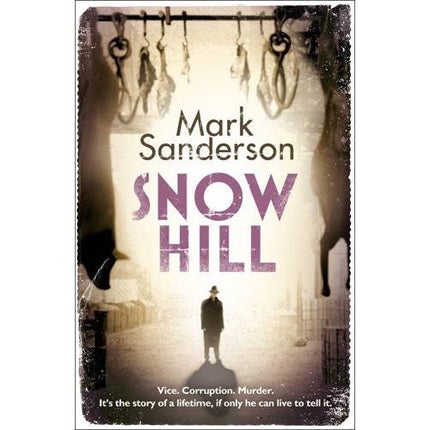Snow Hill, By Mark Sanderson
Enough to chill the blood

Your support helps us to tell the story
From reproductive rights to climate change to Big Tech, The Independent is on the ground when the story is developing. Whether it's investigating the financials of Elon Musk's pro-Trump PAC or producing our latest documentary, 'The A Word', which shines a light on the American women fighting for reproductive rights, we know how important it is to parse out the facts from the messaging.
At such a critical moment in US history, we need reporters on the ground. Your donation allows us to keep sending journalists to speak to both sides of the story.
The Independent is trusted by Americans across the entire political spectrum. And unlike many other quality news outlets, we choose not to lock Americans out of our reporting and analysis with paywalls. We believe quality journalism should be available to everyone, paid for by those who can afford it.
Your support makes all the difference.Over the centuries, much blood has been spilled in the antiseptic corridors of Smithfield. Although the London meat market itself is now surrounded by chi-chi bars and restaurants (with nary a bloodstained apron to be seen), there are signs that it is becoming a popular literary destination. But the blood flowing in new Smithfield-set novels is human rather than animal.
Frances Fyfield's Cold to the Touch married Smithfield and murder in sanguinary fashion, but Mark Sanderson's Snow Hill makes that book look like Heidi. There is also some startlingly graphic transgressive sex. The novel, set in an artfully realised 1930s London, is not (as they used to say) for one's maiden aunt. Sanderson is a journalistic boulevardier of great wit and charm, with a gift for the outrageous. Ironically, this novel – despite its unblushing treatment of gay sexual encounters – is, in the final analysis, more reticent than one might expect.
Struggling journo Johnny Steadman receives a tip-off about the death of a policeman at Snow Hill station, and thinks his luck is in. But he blunders into a dark mélange of corruption and murder at the heart of the Establishment. To survive, he is even obliged (temporarily) to join the ranks of the dead and confront a psychotic man of power.
In this trenchantly written novel, the male rape is responsibly handled, but the narrative pulls few punches. The characterisation is functional rather than nuanced, but the author sports a narrative grasp that won't let the reader go. However, his ace in the hole is the pungent evocation of time and place. London of the 1930s is conjured with immense skill, as are the less than enlightened attitudes of the day – notably towards homosexuality.
Sanderson has previously written a poignant memoir, Wrong Rooms, about the death of a partner from skin cancer. The sensitivity of that book would not be appropriate here, but perhaps in future novels he will marry his keen storytelling skills to the subtle delineation of character that is clearly part of his literary ammunition.
Join our commenting forum
Join thought-provoking conversations, follow other Independent readers and see their replies
Comments